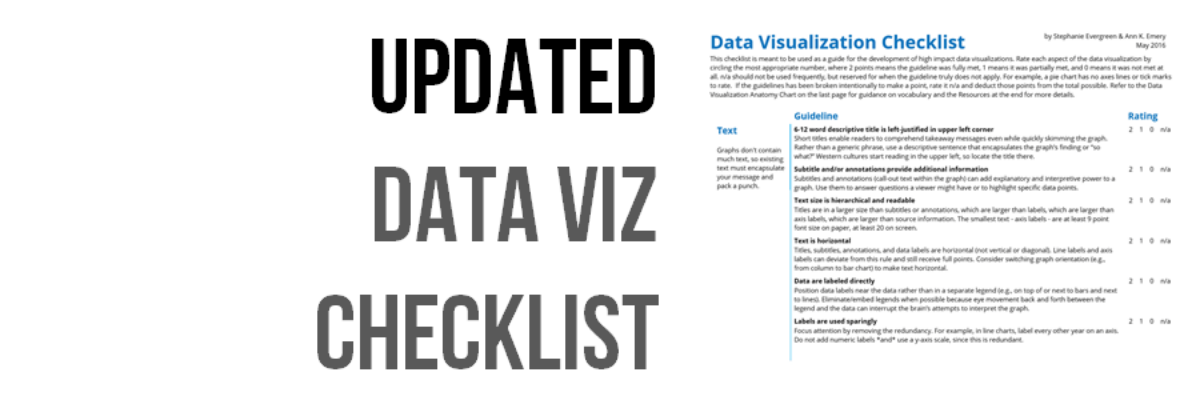HEY THERE: This checklist is now a website where you can upload your image and we will walk you through each checkpoint, helping you rate yourself.
This post has been a long time coming. We knew that people had a thirst for better graphs, a clear understanding of why better graphs were necessary, but they lacked efficient guidance on how, exactly, to make a graph better. Introducing the Data Visualization Checklist.
Download this checklist and refer to it when you are constructing your next data visualization so that what you produce rocks worlds. Use the checklist to gauge the effectiveness of graphs you’ve already made and adjust places where you don’t score full points.
What’s in the Checklist?
The Data Visualization Checklist is a compilation of 24 guidelines on how graphs should be formatted to best show the story in your data. The 24 guidelines are broken down into 5 sections: Text, Arrangement, Color, Lines, and Overall. We also included a data visualization anatomy chart on the last page of the checklist to illustrate key concepts and point out terminology.
We compiled a set of best practices based on extensive research (this was my dissertation topic, after all), tested against the practical day-to-day realities of reporting data to decision-makers and the pragmatic needs of our stakeholders.
This guidance may not apply to all fields or data viz interests. If you are keen on making data art, you will have a whole lotta NOT APPLICABLE up in here.
We have seen thousands of people find clear guidelines on how to make the best use of a graph’s formatting to make their data story shine. In the interactive version of this checklist, I’ll even give you free tips on any checkpoint where you score low. Nothing to lose, everything to gain.


